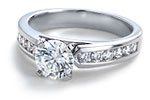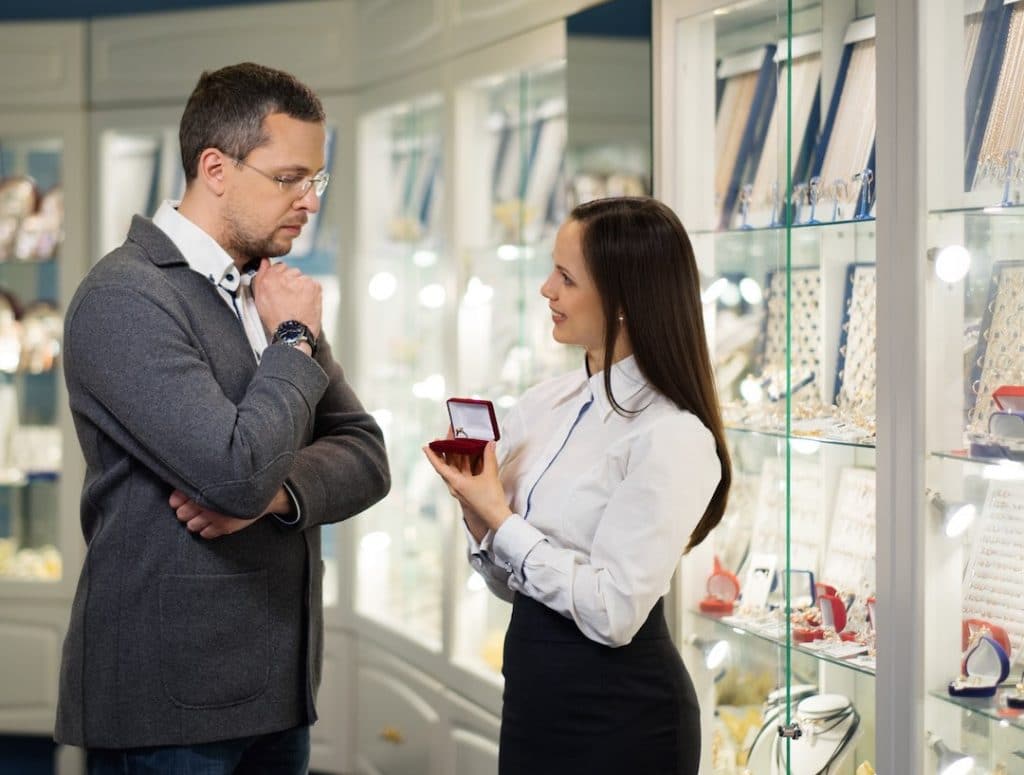 An engagement ring is one of the biggest purchases you’ll make, so it’s important to take some time to research before you buy. Our guide will help you find the perfect setting and diamond for this exciting time in your life. In part one, we’ll discuss settings and stones. In part two, we’ll talk about how to get the best value and quality for your money.
An engagement ring is one of the biggest purchases you’ll make, so it’s important to take some time to research before you buy. Our guide will help you find the perfect setting and diamond for this exciting time in your life. In part one, we’ll discuss settings and stones. In part two, we’ll talk about how to get the best value and quality for your money.
For starters, most engagement rings are made up of two parts: a setting and a diamond or diamond alternative. It is recommended that you first start with finding the perfect setting and then allot the rest of your finances to the stone(s).
Choosing an Engagement Ring Setting
The most common settings are offered in gold (white, yellow or both), platinum or palladium. All are excellent options and depend on personal preference and budget. To help you decide which type of style to choose, here are some descriptions of the three most popular settings:
Solitaire Settings
Solitaires are considered a favorite among engagement ring choices. With prongs lifting up and emphasizing the center stone, the result is illuminating. Four-prong settings prominently showcase the diamond, while six-prong settings offer a very similar look but also provide some additional protection for the stone.
Multi-stone Settings
 Settings with multiple diamonds or gemstones offer extra glitz and glamor for an engagement ring. Popular options include tiny and intricately set diamonds (also referred to as pinpoint or pave). Other classic multi-stone options include channel or bezel settings, where the side stones are inlaid at the same level as the band, protecting the stones while still showing sparkle and style.
Settings with multiple diamonds or gemstones offer extra glitz and glamor for an engagement ring. Popular options include tiny and intricately set diamonds (also referred to as pinpoint or pave). Other classic multi-stone options include channel or bezel settings, where the side stones are inlaid at the same level as the band, protecting the stones while still showing sparkle and style.
Three-Stone Settings
 Three-stone engagement rings are strikingly beautiful and may be worn as either engagement or anniversary rings. They evoke sentimental feelings for the woman, since the three stones are symbolic of the past, present and future.
Three-stone engagement rings are strikingly beautiful and may be worn as either engagement or anniversary rings. They evoke sentimental feelings for the woman, since the three stones are symbolic of the past, present and future.
Stones
The most expensive part of an engagement ring is the diamond—and the price depends on the 4 C’s (color, clarity, cut and carat).
Color: Very white and colorless stones are beautiful but very expensive. Yet for the average consumer, stones with slight color hues of yellow or brown are not noticeable and are much more affordable.
Clarity: This depends on the number and size of flaws in a diamond. The larger the flaw, the lower the clarity and thus the lower the quality of the diamond. Fortunately, certain settings can actually hide small flaws and these stones can make for a beautiful and affordable ring.
Cut: The round brilliant cut is the most popular and affordable of choices, with the princess cut following. Special cuts such as radiant, cushion, emerald or Asscher will be more expensive and rare. To save money, one can pick a more classic cut.
Carat: The weight of a diamond is the most significant part of the cost. Depending on individual preference, opt for a large solitaire instead of a multi-stone in order to get the most bang for your buck. Also think about a cluster setting to give the look of a larger carat stone without the cost.
To give you closer look at the 4 c’s, click on the image below:
Part 2 of 2: Finding the Best Deal (continued here)
Photos courtesy of Blue Nile, HRD Antwerp









